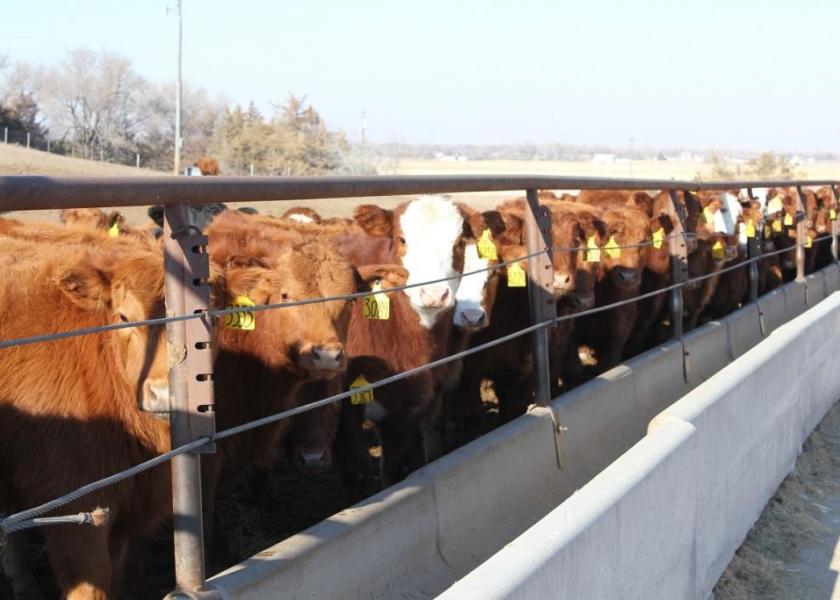Pay Attention to How Often Cattle Eat for Rumen Health

Cows feed us, and we feed our cows. But maybe it’s the rumen microbes feeding us, and we should be feeding them?
Ted Perry, a cattle nutritionist with Purina Animal Nutrition, says the new frontier in nutrition research is the rumen microbe population. He suggests new management practices are shown to improve rumen health.
“Rumen microbes need carbohydrates, a nitrogen source - notice I didn’t say protein – and minerals,” says Perry.
From those three primary ingredients, rumen microbes produce three primary volatile fatty acids: acetate, butyrate and propionate, Perry says. Starch digestion causes a surge in lactate production at the expense of the other two volatile fatty acids and lowers rumen pH, he explains.
Traditional cattle feeding may provide a carbohydrate ration once a day in addition to a forage based-diet, Perry says. This can cause rumen pH to decrease, resulting in lactic acid bacteria to product increasing amounts of lactic acid, he explains.
He cites research performed by Dehority and Tirabasso (2001) showing cattle fed six times per day had double the rumen microbe population of cattle fed once per day.
“Cattle fed twice per day had a rumen pH that stayed below 6.2 for more than 12 hours,” Perry says. “What does that mean for fiber digestion? There’s nothing going on because those fiber bugs are just trying to survive in the low pH.”
Chris Forcherio, Ph.D., beef research manager for Purina Animal Nutrition, suggests bringing a “snack eating” approach to once daily feeding to avoid a surge in lactate production. Similar to a human snack, cattle are able to consume small portions of rations throughout the day, he explains.
Forcherio says after hearing his presentations, many ranchers ask if this is the end of the time-proven approach of hand-feeding range cubes each day in the winter.
Forcherio says no; however, there is one important question ranchers must ask.
“Feeding like that has been successful in our industry,” Forcherio says, “The question is, ‘Can you do it better?’”
Related stories
Rumen Microbes: Hot topic Of Cattle Nutrition Research
Cow Gut DNA Study Finds Bugs That Could Up Meat and Milk Yields







